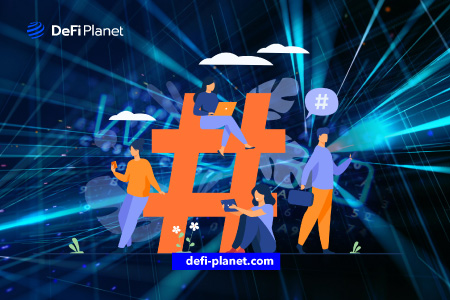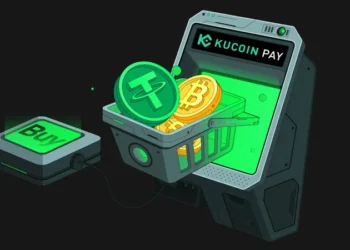Last updated on November 17th, 2022 at 12:16 pm
“Web3” is a popular term that has been bandied about a lot recently. It is considered a revolution of the traditional internet, incorporating features that address the limitations of the conventional internet.
This technology is expected to improve privacy and decentralization, key features lacking in the current version of the internet, especially given that a few large organizations control the internet.
Blockchain is one of the critical technologies that will serve as the backbone of Web3 development and will be vital to its long-term viability.
Web3 is regarded as the more open and sovereign form of the internet, giving the average user complete control over their data.
This article examines the definition of Web3 as well as notable trends that will be observed as the space evolves.
What is Web3?
Web3 is the offspring of the traditional internet infrastructure known as Web2. Web3, also called the semantic web, is a new internet model that promises improved functionality by incorporating innovative features such as AI, blockchain technology, machine learning, and much more into apps and websites.
Tim Berners-Lee, the inventor of the World Wide Web, christened this upgraded version of the internet the Semantic Web. Gavin Wood, a co-founder of Ethereum, coined the name “Web 3”.
Web3 is intended to address nagging issues in Web2, such as centralization, illegal data use, and censorship. As more research into Web3 is conducted, new features and trends will likely emerge.
What Are The Top Web3 Trends?
The following are some of the most important Web3 trends.
Artificial Intelligence
Artificial intelligence is a popular innovation in the development of Web3 solutions. Various organizations are incorporating AI into their architecture to significantly improve their operations.
This is a type of intelligence displayed by machines. It involves machines that simulate human intelligence.
AI involves machines performing tasks that humans are expected to perform. Computers can simulate human problem-solving and decision-making abilities.
Organizations can use AI to predict their clients’ behaviour and needs, improving their clientele’s user experience.
By incorporating this technology, organizations have found it easier to introduce new features. Web3 platforms are using AI technology to improve their functionality and user experience.
Blockchain technology
This list would be incomplete if blockchain technology was not included as a top Web3 trend, especially given how many Web3 companies use this decentralized technology.
A blockchain is a decentralized public ledger that stores a history of transactions that anyone can access. This technology is well-known for being transparent, immutable, and decentralized. Typically, the digital ledger of transactions is duplicated across network nodes, reducing the possibility of bad actors altering the records.
Because there is no centralized authority to verify transactions and create blocks, blockchains are decentralized.
Individuals can track the various activities taking place in the chain because it is a transparent network.
It is nearly impossible to alter records on a blockchain due to its immutability.
Web3 is the epitome of decentralization and transparency, which is one of the many reasons why various development teams are building Web3 innovations on the blockchain.
The smart contract is a blockchain feature that is critical to the development of Web3 platforms.
A smart contract is a block of code that automates agreement among multiple parties. A smart contract can be used to automatically enforce the terms of an agreement as long as one must be reached. This is one of the reasons why, when establishing a DAO, a smart contract is usually used.
Smart contracts, for example, govern the operations of decentralized exchanges. To create a decentralized app (dApp), the developer must deploy one or multiple smart contracts.
Smart contracts can be used to replace traditional contracts due to their immutability. Web3 organizations can use this technology to automate various activities and transactions without having to worry about the interference of a centralized authority or deal with the issues associated with traditional methods of reaching agreements.
Non Fungible Tokens
One underlying principle of Web3 is to shift the power of data and content from a few large tech organizations to the average user.
NFT is an important part of achieving this goal, which is why it is a critical technology for Web3.
Creators can tokenize and monetize their content using NFTs, allowing them to set their own prices. Some Web3 platforms are developing the infrastructure for users to create NFTs representing their work, such as songs, books, movies, and similar products. These creators are then allowed to monetize their work and build a fanbase.
NFTFi, a combination of NFT and Finance, is another important subsector in the Web3 space. It was created in response to the liquidity issues faced by the NFT market. An NFT typically takes a long time to sell, especially if the demand for that particular collection of NFTs is low.
NFT Lending is an aspect of NFTFi in which holders of NFTs, especially bluechip NFTs such as Bored Ape Yacht Club NFT and CryptoPunks, can lease their assets for a period and earn rewards in return or use their NFTs as collateral for loans. The use cases of NFTs are numerous, and Web3 platforms are actively exploring them.
Cloud Technology
The COVID-19 pandemic introduced organizations to working remotely, allowing people to work from anywhere in the world.
In the post-pandemic period, some organizations rely entirely on remote workers, necessitating using specific technology to ensure operations run smoothly.
Cloud services, such as cloud-native systems, are being adopted by these companies.
Low Code Applications
As more organizations go digital, the demand for businesses to create mobile apps and websites keeps growing. Individuals prefer to use the services of companies that have a strong online presence because it improves the user experience.
Several businesses now use low code application building software to create websites and mobile apps. Web 3 exhibits the same pattern. A smart contract, as previously stated, is an important aspect of blockchain technology and Web3. Creating a smart contract from scratch is not as simple as one might think.
Smart contract developers are hired to create the smart contract and publish it on a blockchain like Ethereum. Implementing this could cost thousands of dollars, putting it out of reach for the average person or business.
Some Web3 platforms provide low-code application building software that allows anyone to deploy smart contracts with little or no code, simplifying and making the process more affordable.
In Conclusion,
- Web3 is the offspring of the traditional internet infrastructure known as Web2.
- Web3, also called the semantic web, is a new internet model that promises improved functionality by incorporating innovative features such as AI, blockchain technology, machine learning, and much more into apps and websites.
- Artificial Intelligence (AI) is an innovation that is commonly used in the development of Web3 innovations.
- AI involves machines performing tasks that humans are expected to perform.
- A blockchain is a decentralized public ledger that stores a history of transactions that anyone can access.
- NFT Lending is an aspect of NFTFi in which holders of NFTs, particularly bluechip NFTs like Bored Ape Yacht Club NFT and CryptoPunks, can lease their assets for a period of time and earn rewards in exchange or use their NFTs as collateral for loans.
- Organizations commonly use low code application building software to build websites and mobile apps.
If you would like to read more articles like this, visit DeFi Planet and follow us on Twitter, LinkedIn, Facebook, and Instagram.
“Take control of your crypto portfolio with MARKETS PRO, DeFi Planet’s suite of analytics tools.”





















